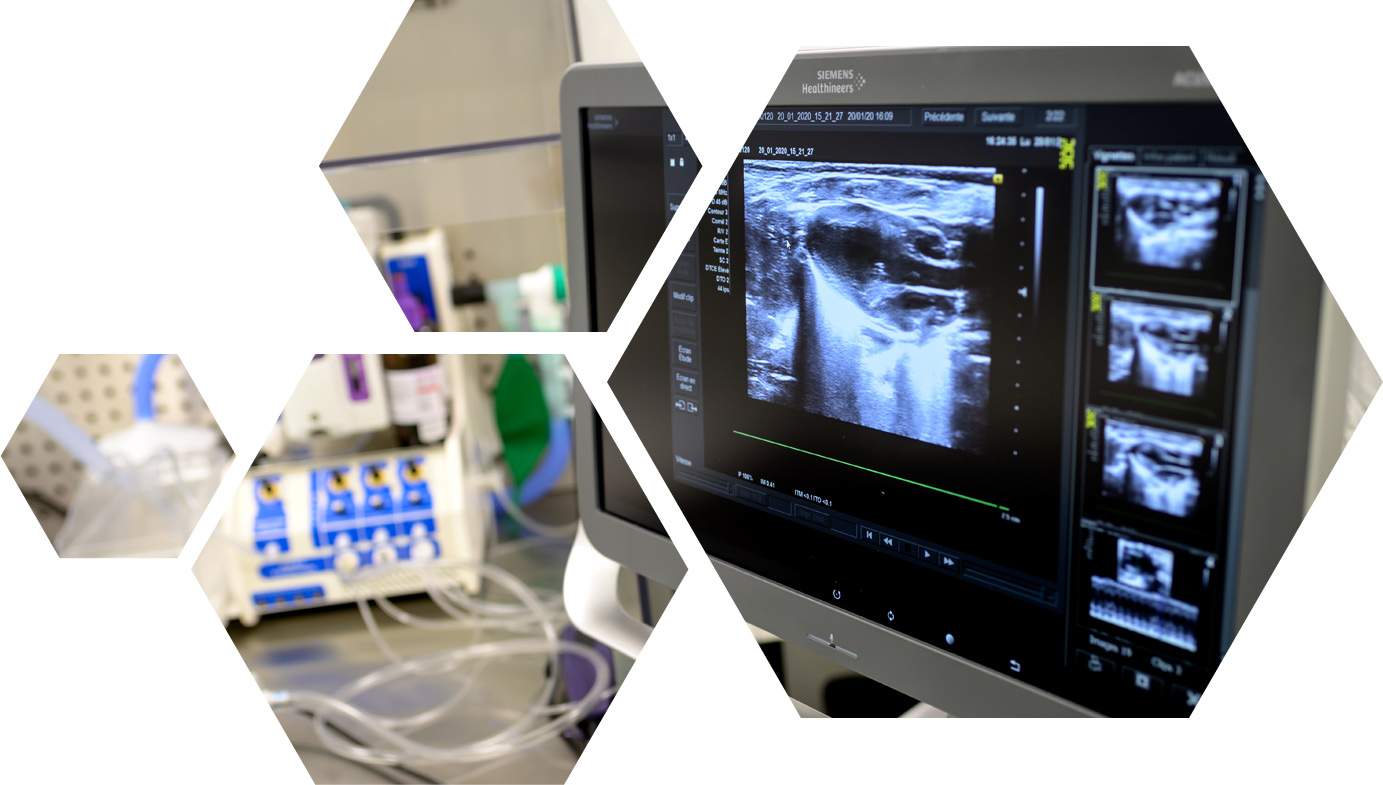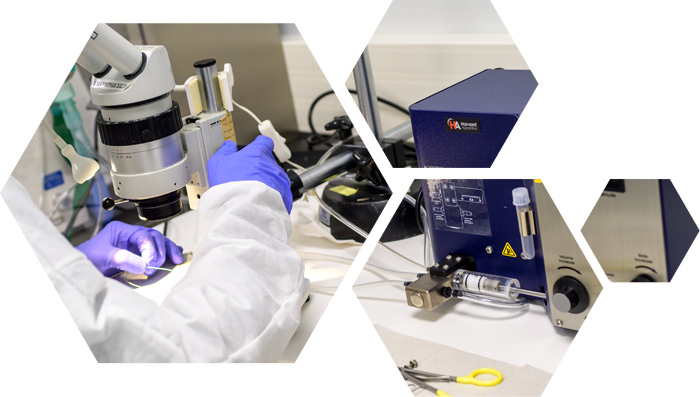
In vivo exploration of cardiovascular diseases
Our services include for all in vivo models invasive and non-invasive assays assessing cardiovascular parameters in anesthetized or conscious free-moving animals (rats, mice, hamsters).
The specialized surgical expertise of our skilled technicians, combined with the use of state-of-the-art data acquisition systems, allows potential cardiovascular liabilities to be more thoroughly assessed and ensures quality throughout the study.
Echocardiography (systolic and diastolic function)
Transthoracic echocardiography is the gold standard tool for providing comprehensive information about cardiac structure and function, helping to establish a diagnosis and guide therapy in all of our pathophysiological models (mouse, rat and hamster).
Different tools are available to fully characterize the severity of any underlying abnormality in systolic and diastolic function including M-mode, 2D, colour, pulsed -wave Doppler, and tissue Doppler imaging.
Moreover, we can perform a stress echocardiography that enables the cardiac structure and function to be dynamically assessed. In this procedure, the effect of exercise is simulated pharmacologically, triggering increased heart rate, cardiac output, and myocardial oxygen demand (dobutamine-induced stress).
Telemetry monitoring
Cardiomedex surgically implants miniature devices to measure one or more parameters (e.g., blood pressure, heart rate, ECG, temperature, etc.) in conscious freely moving animals.
Telemetry studies enable the evaluation of test articles on cardiac hemodynamic and electro-cardiograms and/or screening of lead compounds in early preclinical drug development.

Millar probes (left ventricle pressure) – Pressure and volume loops
We can include advanced hemodynamic characterization in all our models. For instance, Millar probes enable highly accurate pressure measurements within the left ventricle or real time left ventricular pressure-volume loops, providing a framework for understanding cardiac mechanics. These systems enable us to measure parameters under variable conditions of heart load.

Electrocardiogram & Heart rate variability
A surface electrocardiogram is used on anesthetized animals to measure the heart’s electrical activity and highlight cardiac arrythmias.
Heart rate variability (HRV) is considered as one of the most promising quantitative markers of autonomic nervous system activity. As reduction of HRV has been reported in several cardiological and non-cardiological diseases, the HRV analysis is a powerful tool that provides valuable insights into physiological and pathological conditions and also enhance risk stratification.
Treadmill
Exercise intolerance and exertional fatigue are hallmark symptoms of heart failure and are associated with increased disability and mortality. Treadmills, with an adjustable speed and slope, enable forced exercise training and accurate fatigue testing in rodents.
Treadmills protocols have been established for the exhaustion test on healty mice, rats and hamsters as well as on our HF-pEF models.
CONTACT US FOR MORE INFORMATION
